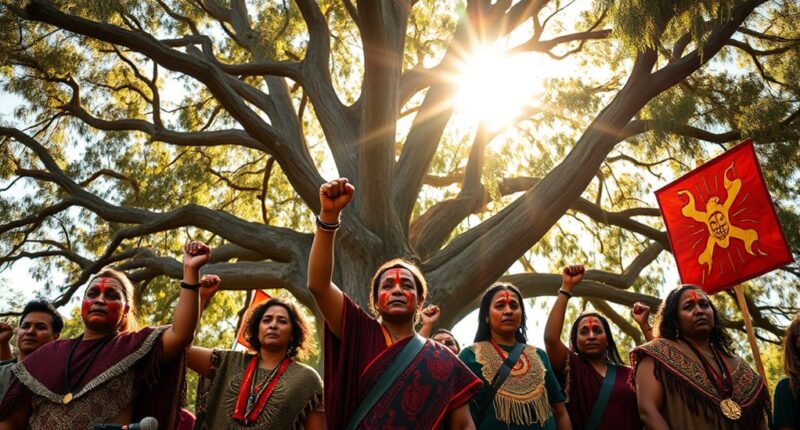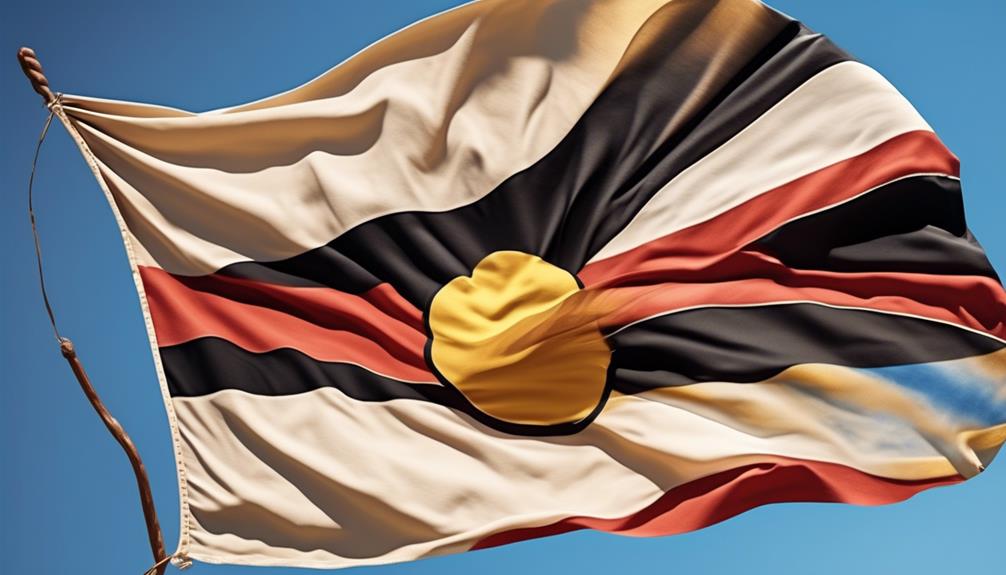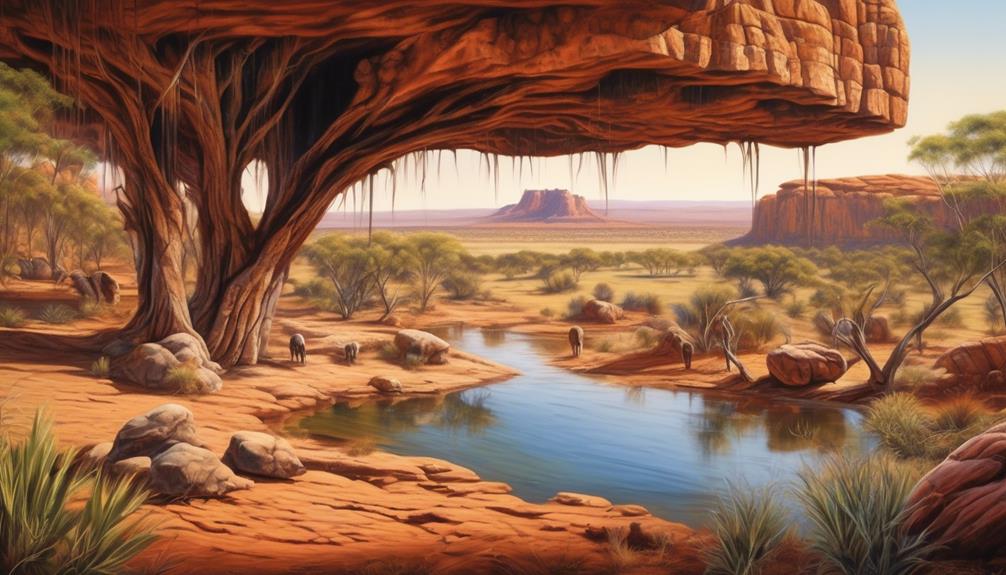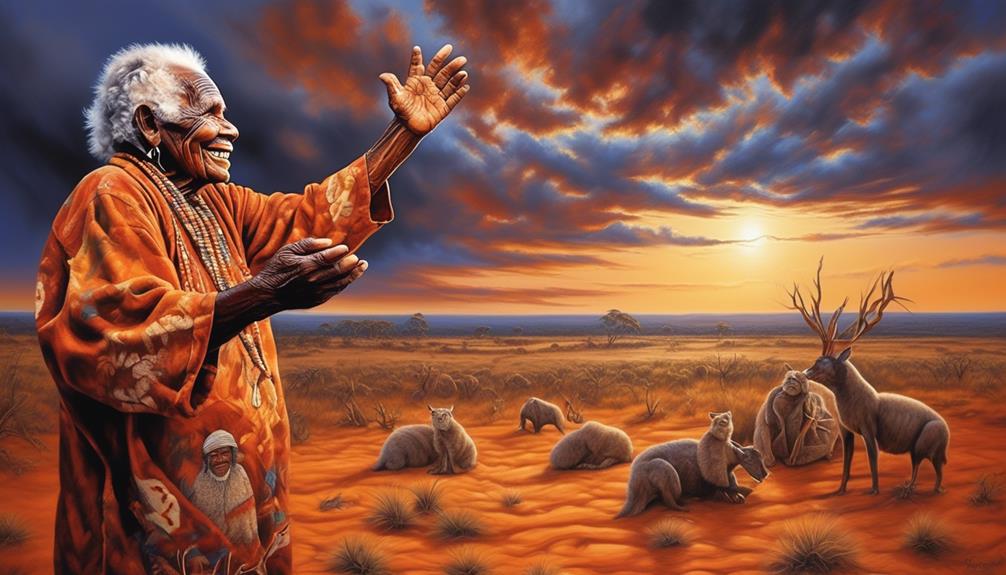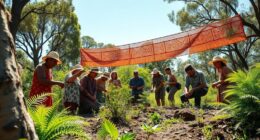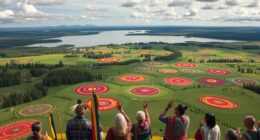You can see Aboriginal activism transforming over time from resistance to resilience through key moments like the 1970s land rights movements and legal wins such as the Aboriginal Land Rights Act. Indigenous communities have used protests, courts, and cultural revival efforts to assert sovereignty and protect their heritage. Modern tools like social media amplify their voices, helping them connect and gain worldwide support. Want to explore how these moments shaped their ongoing fight for justice? Keep going to discover more.
Key Takeaways
- The 1970s saw landmark land rights legislation, like the Aboriginal Land Rights (Northern Territory) Act, marking a turning point in legal recognition.
- Indigenous communities have used protests, legal battles, and cultural revival efforts to assert sovereignty and resist erasure.
- Documenting history, revitalizing languages, and cultural practices serve as acts of resistance and resilience against colonial impacts.
- Modern tools such as social media amplify activism, enabling communities to share stories and rally support worldwide.
- Ongoing commitment to land rights, cultural preservation, and self-governance demonstrates a continuous movement from resistance to resilience.
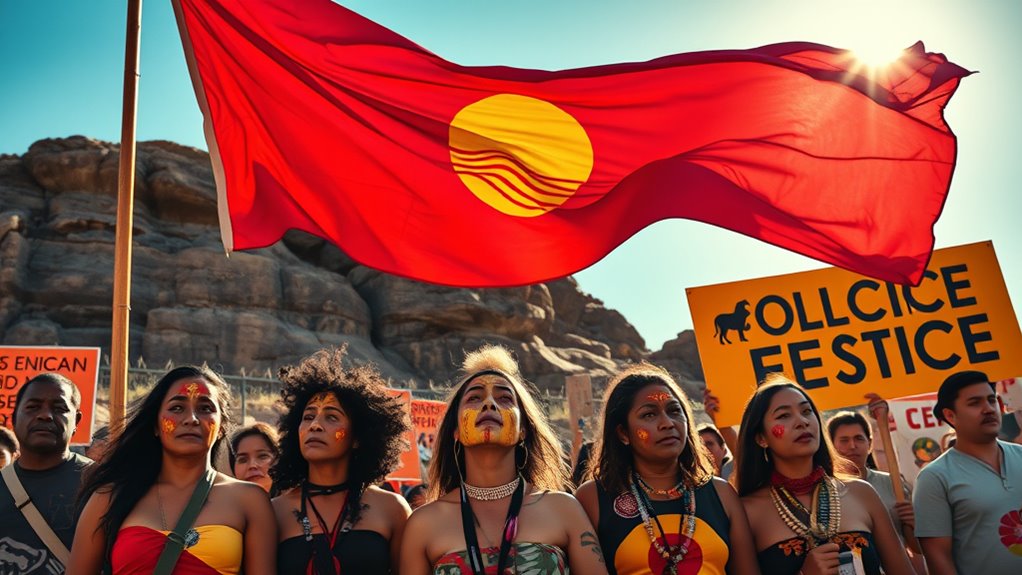
Have you ever wondered how Aboriginal communities have fought to protect their rights and culture? Throughout history, they’ve faced countless challenges, but their resilience has always shined through. Central to their activism is the fight for Indigenous sovereignty—the recognition of their right to govern themselves and maintain control over their lands. This struggle isn’t just about land; it’s about affirming their identity, traditions, and authority over their cultural heritage. You can see this in moments when communities have stood up against policies that threaten their way of life, asserting their sovereignty through protests, legal battles, and cultural revival initiatives. These efforts aim to ensure their voices are heard and respected on national and international stages. The fight for sovereignty often involves navigating complex legal and political systems to secure their rights effectively. Cultural preservation plays an essential role in this ongoing fight. Aboriginal communities work tirelessly to keep their languages, stories, ceremonies, and art alive for future generations. You might witness elders passing down traditional knowledge during cultural festivals or communities establishing language programs to combat the erosion caused by colonial education systems. These acts of cultural preservation aren’t just about maintaining traditions—they’re acts of resistance against attempts to erase their identity. When governments or institutions try to assimilate or diminish their cultures, Aboriginal activists respond by documenting their history, revitalizing languages, and promoting awareness of their rich heritage. Each effort reinforces their connection to the land and their ancestors, strengthening their collective resilience. Key moments in Aboriginal activism highlight how these struggles for sovereignty and cultural preservation have evolved. For example, the land rights movements in the 1970s, such as the landmark Aboriginal Land Rights (Northern Territory) Act in Australia, marked a turning point. These victories demonstrated that persistent activism could lead to tangible legal recognition of land claims. Similarly, the push for recognition of native title rights has become a symbol of Indigenous resilience worldwide, asserting their authority over traditional lands. These moments not only challenge oppressive policies but also inspire new generations to continue fighting for their rights. Today, Aboriginal communities use modern tools like social media to amplify their messages, share their stories, and rally support for their causes. The ongoing use of modern technology plays a significant role in amplifying their voices and connecting communities across vast distances. In essence, the ongoing journey from resistance to resilience is rooted in their unwavering commitment to Indigenous sovereignty and cultural preservation. Every protest, legal victory, or cultural revival is a testament to their strength and determination. As you observe these moments, remember that they are more than symbolic acts—they are crucial steps toward justice, recognition, and the safeguarding of their identity for generations to come.
Frequently Asked Questions
How Have Indigenous Cultures Influenced Activism Strategies?
You see how indigenous cultures influence activism strategies through their rich cultural expression and oral traditions. These elements help you connect with communities, preserve identity, and spread messages effectively. By incorporating storytelling and cultural practices, you create powerful, authentic campaigns that resonate deeply. This approach strengthens resilience and encourages others to stand with indigenous peoples. Your understanding of these traditions enhances your ability to support meaningful and respectful activism efforts.
What Role Do Youth Play in Aboriginal Resistance Movements?
You play a crucial role in Aboriginal resistance movements through youth leadership, inspiring change and fostering cultural preservation. Your energy and ideas drive protests, awareness campaigns, and community initiatives that challenge injustice. By actively engaging, you help guarantee traditions are passed down while advocating for rights. Your involvement empowers others, strengthens resilience, and keeps the spirit of activism alive, making a lasting impact on the movement’s future.
How Has Government Policy Shifted Due to Activism Efforts?
Did you know that government policy change often follows powerful activism efforts? Your actions have prompted essential legal reforms and shifts in policies, making a real difference. Activism raises awareness, pressures policymakers, and sparks dialogue, leading to tangible change. You play a key role in shaping a more just future by advocating for Aboriginal rights. Your voice helps push for sustained policy change that respects Indigenous sovereignty and promotes reconciliation.
What Are the Long-Term Impacts of Key Protests?
You see that key protests have long-term impacts by strengthening Land Rights and Cultural Preservation. These protests raise awareness, inspiring policy changes that recognize Aboriginal connection to land and their cultural practices. Over time, they empower communities to reclaim their heritage, foster reconciliation, and make certain future generations maintain their identity. Your involvement highlights how activism can create lasting change, shifting society towards greater respect and understanding of Aboriginal rights.
How Do International Indigenous Movements Compare?
Did you know over 370 indigenous movements exist worldwide? International indigenous movements often emphasize cultural preservation and sovereignty debates, reflecting shared struggles for recognition and rights. You’ll notice similarities in how they challenge colonial legacies, but differences emerge based on regional histories and issues. These movements strengthen global solidarity, inspiring local activism, and advancing indigenous sovereignty while protecting cultural identities across nations.
Conclusion
As you reflect on these pivotal moments, you see that Aboriginal activism is a mighty river, carving new paths through steadfast resistance and growing resilience. Each act of courage, like a drop of water, contributes to the vast ocean of change. Your awareness fuels the ongoing flow, reminding you that every voice matters in shaping a future where Indigenous rights and culture thrive. Stay inspired—your support helps keep this powerful current alive.
